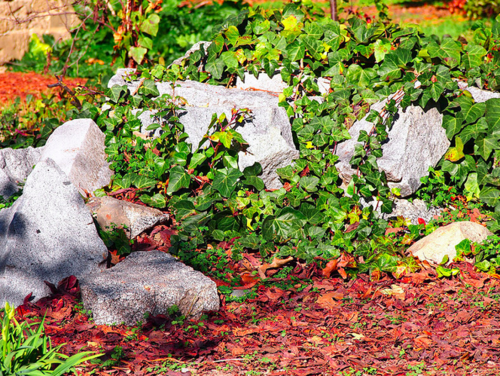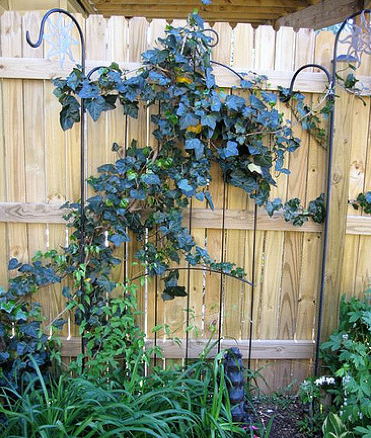Ivy (Hedera) is an evergreen creeping or climbing woody plant. It is native to many parts of the world––western, central and southern Europe, Macaronesia, northwestern Africa and across central-southern Asia east to Japan and Taiwan.[1]
Ivy plants can climb or cover ground spaces. In fact, for many gardeners and those wishing to cover built structures, this ability is considered extremely useful. In some cases, ivy can even assist in retaining walls or fence lines on slopes.
Flowering ivy can be appealing to bees and butterflies, for both nectar and pollen.
Types of ivy

Ivies suited for wall climbing include:
- Hedera helix "Buttercup"
- Hedera helix "Goldheart"

Ivies suited for ground cover include:
- Hedera hibernica
- Hedera helix cultivars such as "Shamrock" or "Ivalace"

Ivy can be trained to follow a trellis.
Growing ivy
Plant ivy in the autumn or spring. It likes standard soil which drains well. In terms of position, ivy can tolerate both sun and shade. Be aware that African varieties cannot tolerate frost.
To propagate, take cuttings in autumn, measuring about 10 to 15cm (4 to 6 inches) in length. Plant the cuttings in containers inside a cold frame, filling the containers with peat and leaf mould. When the cuttings take well, they can be planted in the garden as required.